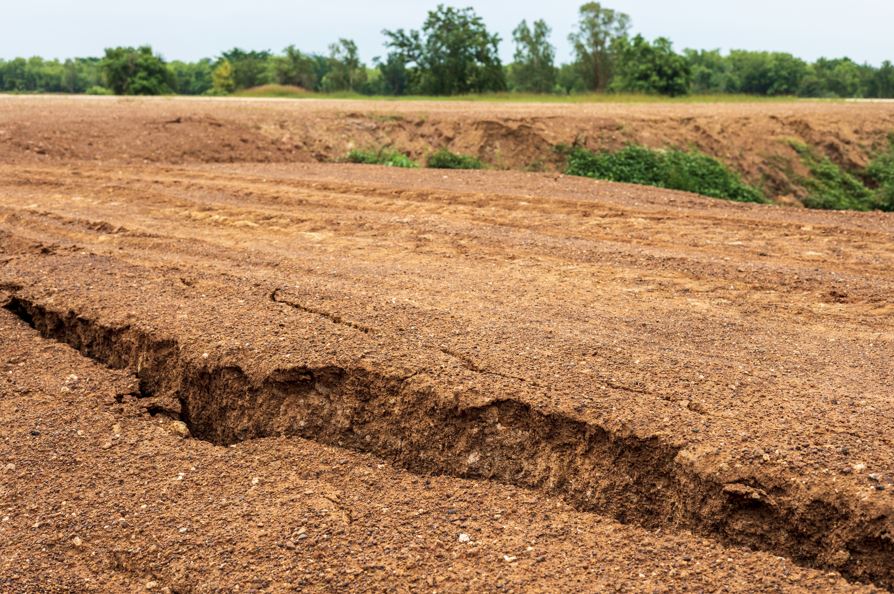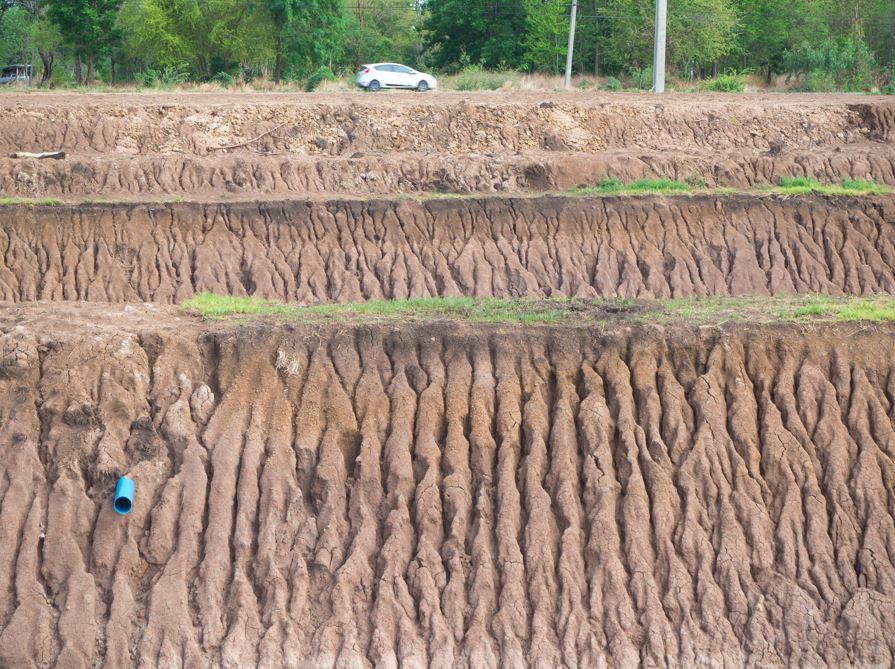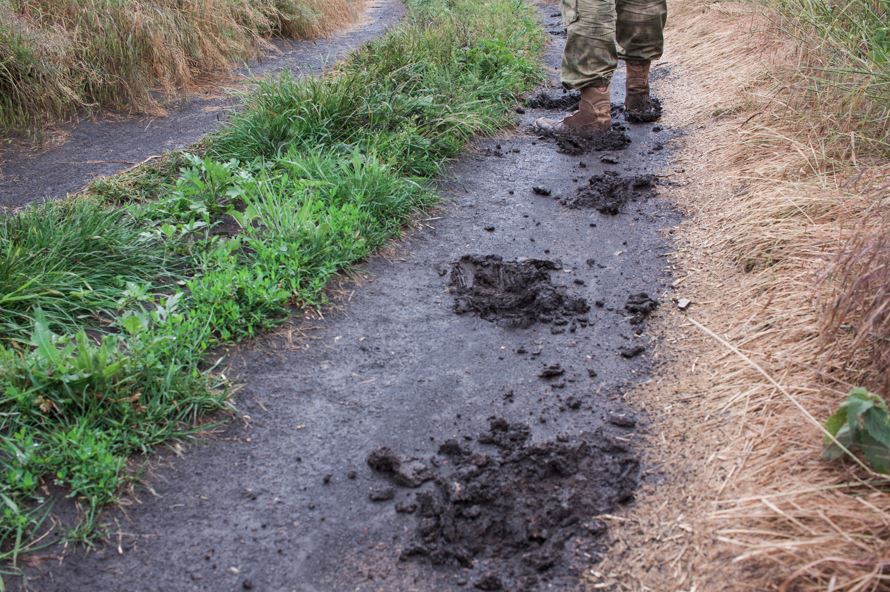Soil infiltration rate is an important aspect of erosion control considerations. It is the speed at which water can enter and infiltrate into the soil, and it affects how much runoff will occur in a given area.
Infiltration rates are affected by several factors such as soil type, compaction, slope steepness, vegetation cover, surface condition, and temperature. Understanding these different factors can help you determine the best way to manage your land in order to reduce erosion and protect against flooding events.
Let’s the implications of this process for managing your land to reduce soil erosion effectively.

Erosion Control Considerations
Soil infiltration is a crucial factor to consider when it comes to erosion control. In simple terms, it refers to the speed at which water penetrates the soil surface. The importance of this rate lies in its ability to reduce the amount of runoff that causes soil erosion. When soil infiltration rate is high, the water is able to seep into the ground and nourish the plants, which in turn hold the soil together.
On the other hand, when the soil is compacted, the water is unable to penetrate the surface and instead flows over the top, washing the soil away and carrying with it the pollutants that can cause serious environmental damage.
Understanding and monitoring soil infiltration rates can help to prevent soil erosion and encourage the growth of healthy vegetation, making it an essential factor to consider for anyone looking to protect the environment.
How Different Factors Can Affect Infiltration Rates

Soil Type
Soil texture and structure play a crucial role in infiltration rates. Coarse-textured sandy soils have larger pore spaces, allowing water to infiltrate more quickly. On the other hand, fine-textured clay soils have smaller pore spaces, restricting water movement and reducing infiltration rates.
Often, due to conventional farming practices, construction equipment, and lack of vegetative cover, soil can become compacted, reducing infiltration capacity even more. Compacted soils have low permeability because they have fewer pore spaces that can absorb water.
On site soil testing can quickly inform land owners of their soil type and compaction status.
Slope Steepness
Infiltration rates are also affected by the slope of the land. As the slope increases, the rate of water infiltration decreases due to water being unable to infiltrate at the soil surface, and the force of gravity pulls the water down the slope. Steep slopes also increase the likelihood of surface runoff, which can lead to soil erosion and decreased infiltration rates.
Vegetation Cover
Vegetation cover plays an integral role in modifying infiltration rates. The presence of vegetation helps to reduce the erosive force of raindrops on the soil surface and reduce runoff. When rain hits the plants first, then cascades down to the soil, the plants act as a shield to protect the land from the repeated compacting effect of the rain.
Vegetation roots can break up compaction and create pore spaces by loosening the soil and increasing permeability. As plants die back in winter, they are added to the soil which feed microbial populations. Diverse soil microbes including bacteria and fungi create a healthy soil food web which serves to increase soil structure and stability, creating more space for water infiltration.
Surface Condition and Temperature
The condition of the soil surface and the temperature of the water have a substantial effect on infiltration rates. A soil surface that is hard and compacted will have reduced infiltration rates. Additionally, the temperature of the water affects the infiltration rate, with warmer water having a faster infiltration rate than colder water. Warmer water helps to expand the soil pores, allowing water to infiltrate faster.
Managing Your Land
Understanding the various factors that affect soil infiltration practices can help you make well-informed decisions on managing your land. Knowing how different soil types, slopes, vegetation cover, surface condition and temperature all effect infiltration rates can enable you to create an effective erosion control plan.
Identifying areas at risk of flooding and developing strategies to reduce this risk is the result of becoming familiar with infiltration issues. By taking the time to look into soil infiltration you may notice permanent pools of water form underground which can impact soil stabilization and even lead to mosquito breeding. It is important to recognize that different land management techniques may have varying effects on infiltration rates, so you can be as safe as possible!
Ways To Improve Infiltration Rate On Your Land
Reduce compaction:
Soil compaction can be a significant obstacle to infiltration because it causes soil particles to become densely packed together, leaving little room for water to flow. To address this issue, you should limit heavy equipment use and ensure that livestock does not overly graze your land. You can also use deep tillage methods, such as subsoiling, to loosen compacted soil and allow for better water flow.
Plant cover crops:
Cover crops are plants that are grown for the sole purpose of protecting and enriching the soil. They help to increase infiltration rates by improving soil structure and water-holding capacity. Legumes such as clover, beans, and alfalfa are particularly effective due to their ability to fix nitrogen from the atmosphere and add plant material to the soil.
Increase soil organic matter:
Humus rich soil is essential for improving infiltration rates because it acts like a sponge, holding water and slowly allowing infiltration. Adding compost or manure to your land. Be sure to apply these amendments at the right time of year to optimize their effectiveness.
Build berms and swales:
Berms and swales are landscape features that help to slow the movement of water across your land, allowing it more soil infiltration time. Berms are raised soil mounds, while swales are shallow infiltration trenches that collect water. By combining the two, you can create an effective system for intercepting runoff and guiding it into your soil.
Use conservation tillage:
Conservation tillage is a method of tillage that minimizes soil disturbance, leaving crop residues on the land and reducing soil erosion. This technique helps to preserve soil structure, resulting in higher infiltration rates. It is essential to choose the right conservation tillage method for your specific cropping system and soil type to optimize its effectiveness.
What Are Infiltration Trenches
Infiltration trenches are a stormwater management tool that has been gaining popularity in recent years. Essentially, an infiltration trench is a shallow excavation filled with permeable materials, such as gravel or crushed stone, which are designed to capture rainfall and increase infiltration capacity.
When water enters the trench, it gradually filters through the materials and into the soil below, where it is naturally absorbed and cleansed. This process not only helps to reduce stormwater runoff volume and mitigate flooding, but it also helps to protect local waterways by reducing the amount of pollutants and sediment that are carried into them during rain events. Overall, infiltration trenches are a simple and effective way to manage stormwater in a sustainable and environmentally-friendly way.
How To Find The Infiltration Rate Of Your Land
If you’re looking to gauge the water infiltration rate of your land, soil borings could be your best tool. By drilling holes 8-10 inches deep and measuring the time it takes for water to soak in, you can determine the speed at which water is absorbed by the soil. Although this is considered on site soil testing it is very easy and straightforward.
Pros in the urban hydrology field say this information is crucial for understanding how well your land can retain water, which could be a major factor in its use and value. By taking multiple soil borings across your property and comparing the results, you can get a more comprehensive understanding of the water infiltration rate and soil textures of your land. Don’t neglect this important step in assessing your property’s potential – soil borings could unlock valuable insights about your land’s hydrology.

The Importance of Monitoring Infiltration Rates
Monitoring infiltration rate is crucial to maintaining healthy soil and reducing the risk of erosion. Without monitoring, you may not notice changes in infiltration rates until the damage is already done. Here are a few reasons why monitoring infiltration rates is so important:
Identifying Problem Areas
By monitoring infiltration rates, you can identify problem areas and take steps to address them before they become more serious. For example, if you notice a decrease in infiltration rates in a certain area of your land, you can investigate the cause and take steps to fix it. This might involve adding more organic matter, reducing compaction, or planting more vegetation.
Measuring the Effectiveness of Management Practices
Monitoring infiltration rates can also help you measure the effectiveness of different land management practices. For example, if you implement a new erosion control measure, you can monitor infiltration rates before and after to see if there has been an improvement. This can help you fine-tune your management practices and identify what works best for your land.
Preventing Environmental Damage
Monitoring infiltration rates can help you prevent environmental damage from soil erosion and runoff. If you notice a decrease in infiltration rates, you can take steps to address the issue before erosion becomes a problem. This can help protect your land and prevent the loss of valuable soil and nutrients.
Meeting Regulatory Requirements
Monitoring infiltration rates is often a requirement for compliance with local, state, and federal regulations. Many erosion and sediment control plans require monitoring of infiltration rates to ensure that the plan is effective and that there is no negative impact on nearby waterways or other sensitive areas.
This type of monitoring rates is a critical component of any erosion and sediment control plan. This helps landowners can identify problem areas, measure the effectiveness of infiltration practices, prevent environmental damage, and comply with regulatory requirements.
Final Thoughts About Soil Infiltration and Land Management Practices
Soil infiltration rate is an important factor to consider when managing land for erosion control. Understanding the various factors that affect this rate can help you make informed decisions on how best to manage your land and create effective strategies for reducing risk of flooding or other forms of water damage.
There are several ways to improve the infiltration rate on your property, such as reducing compaction, planting cover crops, increasing organic matter in the soil, building berms and swales, and using conservation tillage methods. By understanding these techniques and applying them correctly according to your specific needs, you can ensure a healthy environment with minimal risks from flooding or runoff.

